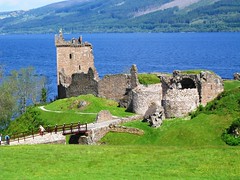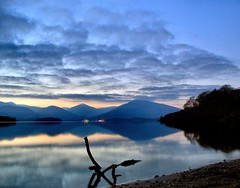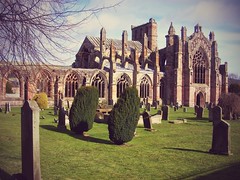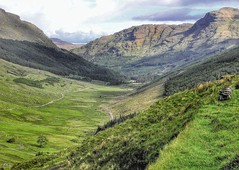Pictavia
DEPICTING THE PASTJacqueline O’ Sullivan goes back to AD 685 as she explores Brechin’s newest visitor attraction.
 Two thousand years ago a number of
Iron Age tribes lived in Scotland. These tribes
gradually amalgamated and by AD 297 they were
collectively known as Picti, the Picts.
Two thousand years ago a number of
Iron Age tribes lived in Scotland. These tribes
gradually amalgamated and by AD 297 they were
collectively known as Picti, the Picts.
By AD 848 Pictavia, the land of the Picts was united with the Kingdom of the Scots, creating the foundations for modern-day Scotland.
Brechin’s new visitor centre, Pictavia, is a fun, interactive facility where everyone can learn more about Scotland’s ancient inhabitants. Pictavia is the only purpose-built facility in the world dedicated to the history and culture of this enigmatic race.
It’s an intriguing Pictish journey through a series of interactive exhibits, replicas and artefacts.
Following a brief introductory video on Pictish life and history, visitors are plunged into a cavernous tomb covered with strange symbols and cryptic carvings.
The time is AD685. Northumbrian King Egfrith has advanced north to claim the Picts’ territory as his own.
Advancing on Dunnichen Hill the Northumbrian forces encountered the weaker half of the Pictish forces. As they turned and ran, Egfrith’s men followed…playing into the Pict’s battle plans. Awaiting them was the stronger half of the Pictish forces who pierced their enemies with swords and spears, leaving them to drown in marshy waters.
The Picts may have seemed a simple people, but appearances can be deceptive.
Descended from Iron Age tribes, the Picts came from a lineage where natural resources were used with skill and sophistication. They knew about plants and their properties as food or medicine. They built structures to live in and their farming methods were efficient, well-planned ventures. They also recorded elements from their culture and way of life on stone.
And they knew a thing or two about military manoeuvres. There is a reproduction of the Battle of Dunnichen, a Pictish triumph in AD 731 that put an end to Northumbrian expansion. The story is set in cartoon-strip style, with the action documented across three rows on the stone.
 After stepping through a
tunnel, which serves as a useful psychological
ploy to transport visitors back in time, you
enter the main space where a timeline on the wall
guides you through Pictish history.
After stepping through a
tunnel, which serves as a useful psychological
ploy to transport visitors back in time, you
enter the main space where a timeline on the wall
guides you through Pictish history.
Within the centre of the room are aged stone carvings, tools, weapons and treasures from Pictish life. Music was an important part of Pictish life, the people fashioning their instruments from wood and animal hair. Examples have long disappeared, but within Pictavia’s Tower of Sound, instruments have been recreated using illustrations from Pictish carvings.
Musical reproductions of harps and drums can be plucked or pounded by visitors.
They can also pick up earphones, sit back, close their eyes and gauge a musical picture of Pictish life.
The interactive appeal continues with specially-designed computer games featuring questions and Pictish symbols. Other features are bound to attract children too. Alongside some of the stones lie silver handles resembling old-fashioned telephone handsets. Pick them up and you can hear a history of Pictish life.
One of the most fascinating exhibits is a reproduction of a ‘Kingship’ chain. This incredibly valuable item, made of solid silver, weighed over 2kg and would have been owned by an extremely powerful member of the Pictish community, perhaps a person in royal office.
Despite the strong infrastructure and culture of this proud and advanced race, with the advent of Christianity, many changes were wrought. But it was a powerful enemy that altered the course of Pictish history.
A strong Norse adversary attacked the coast of northern Britain. The fearful Vikings had arrived. At first the individual tribes tried to defend themselves, but by the end of the 8th century Pictish forces joined with others for the common good of their land. And by 848AD, Kenneth MacAlpin succeeded in joining the kingdom of Scots and Picts into a united people. The story of the Picts had ended and the Scottish nation had been born.
Pictavia offers
the chance to follow this whole fascinating story
– you can really believe you were there.
Pictavia: Land of the Picts
Open:Summer: Mon-Sat, 9am-6pm
Winter: Mon-Sat, 9am-5pm
Entry: Adults: £3.25, Children: £2.25,
Concessions: £2.25
Contact:Pictavia:
Land of the Picts
Brechin Castle Centre
By Brechin
Angus
Tel: (01356) 626241
Web site: www.pictavia.org.uk








